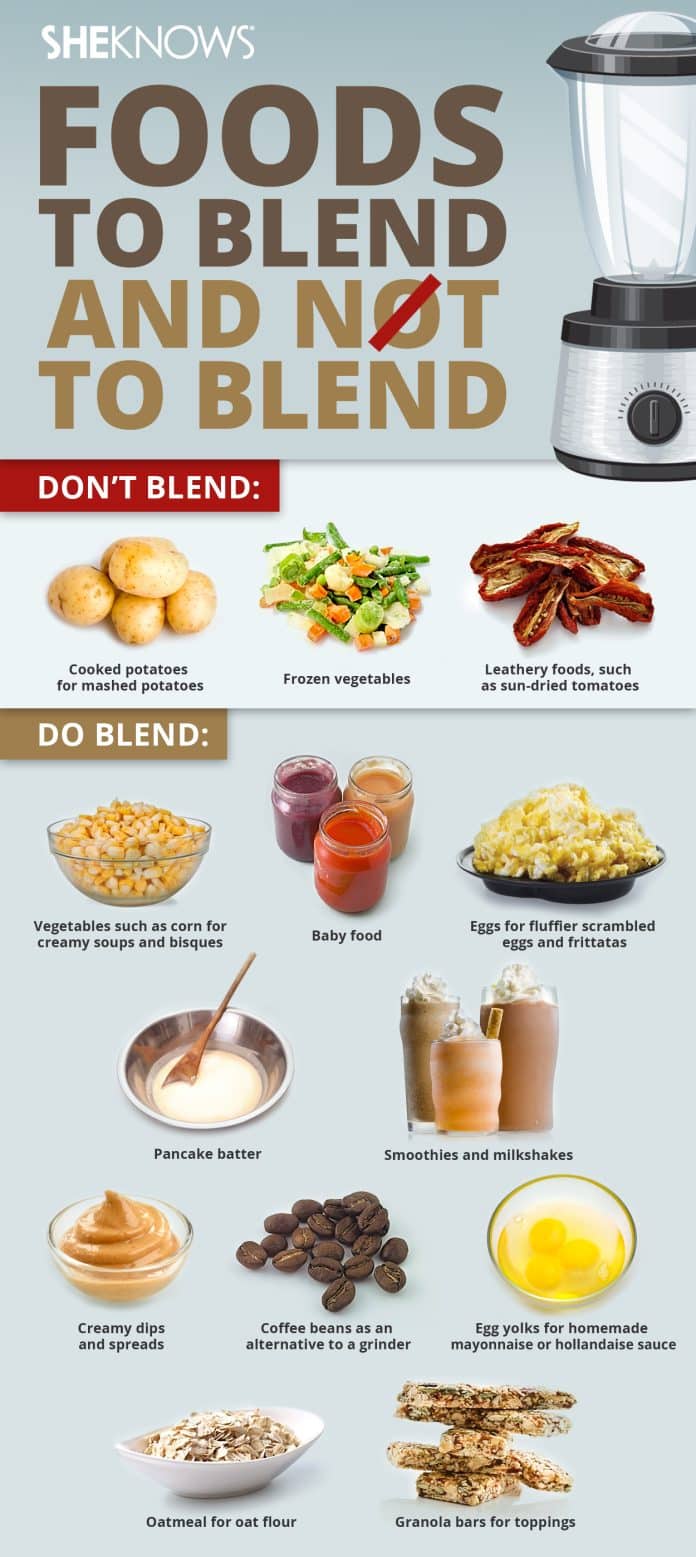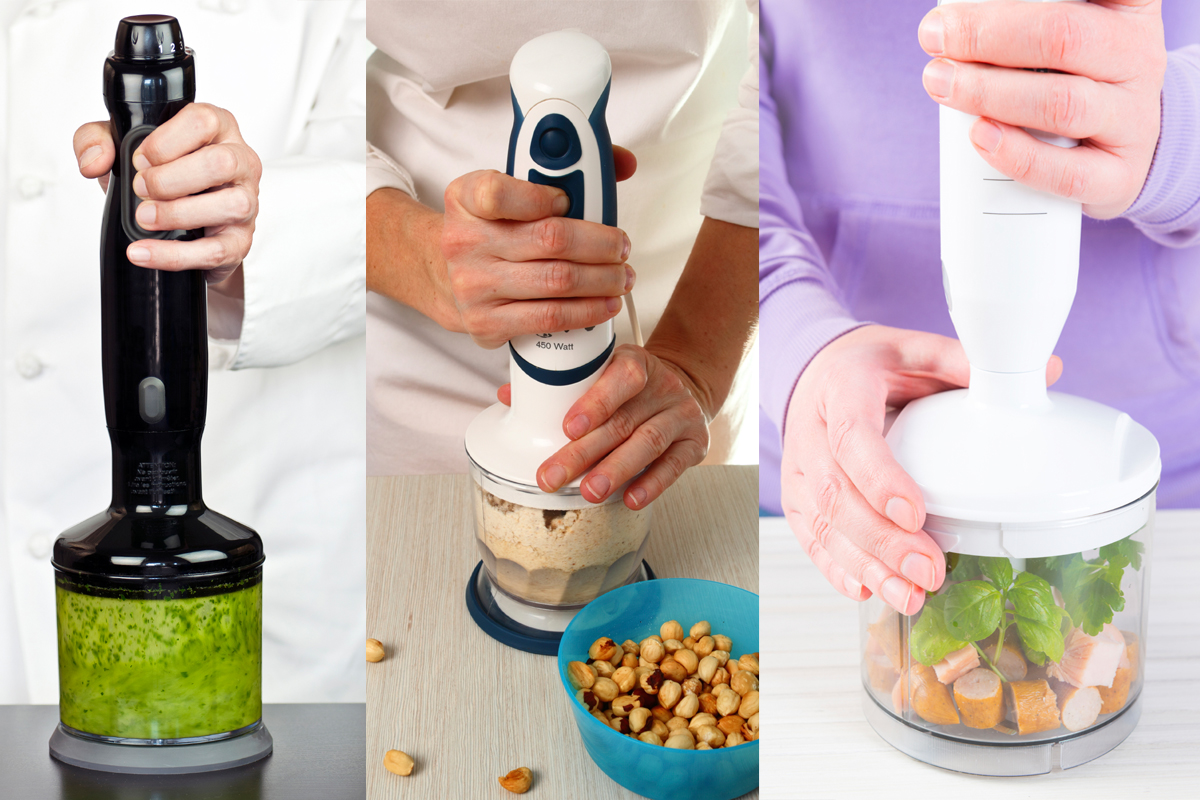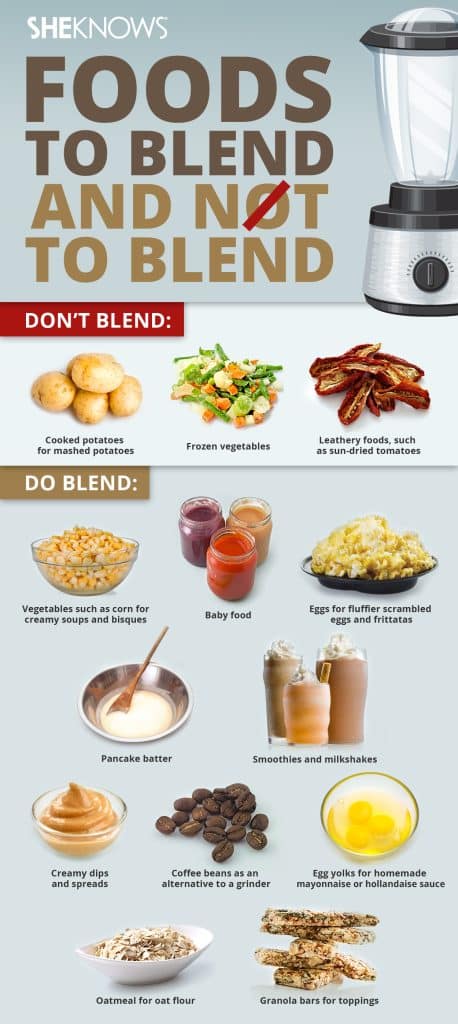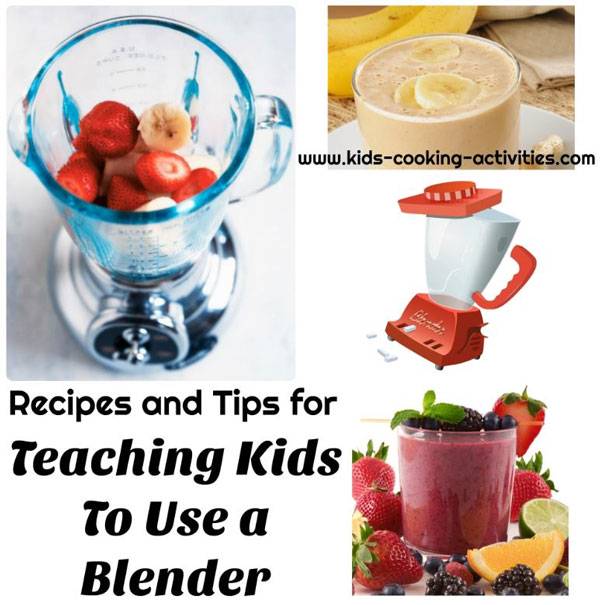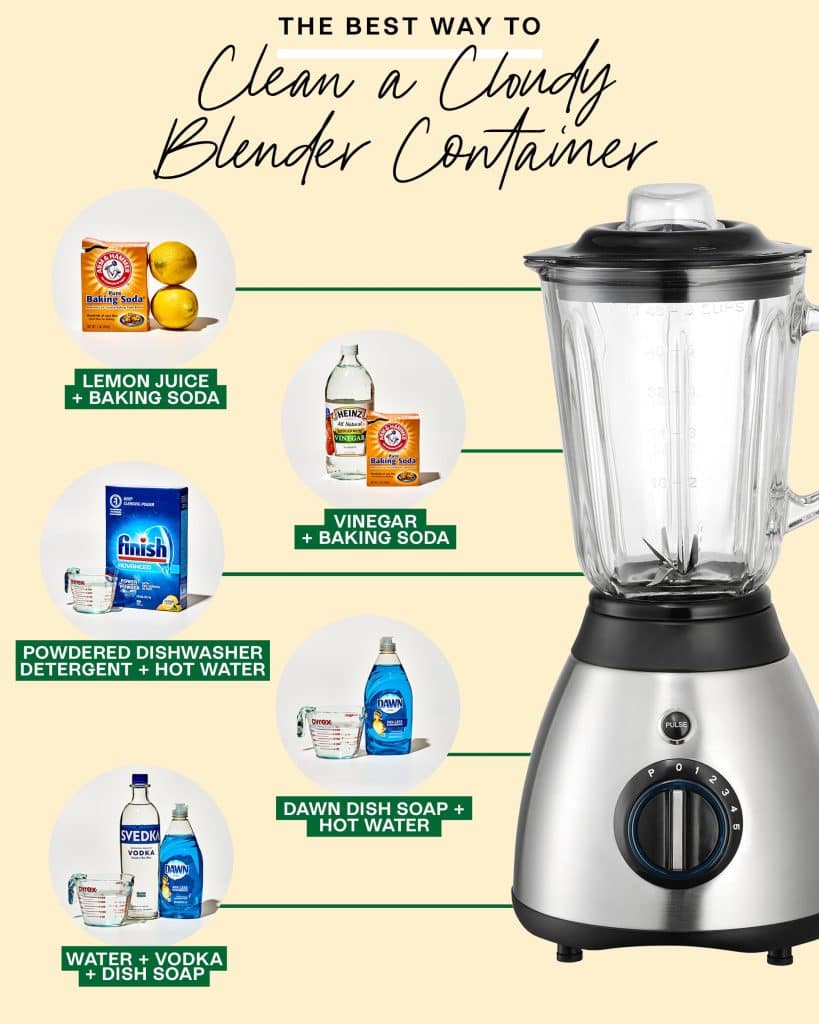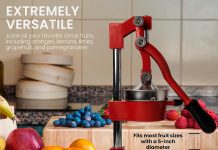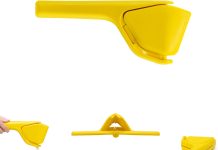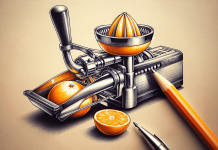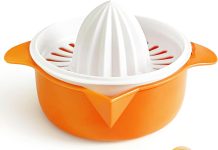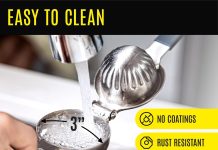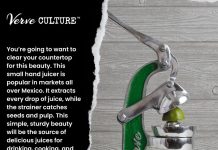Blending up our favorite smoothies or whipping up a delicious homemade sauce can be a breeze with the help of a trusty blender. But, as with any electrical appliance, it’s important to prioritize safety when using a blender. From proper cleaning techniques to preventing accidents, this article will guide you through the essential safety tips to keep in mind every time you fire up your blender. So, grab a seat and let’s ensure our blender adventures are not only tasty but also accident-free.
This image is property of cdn.homeonline.com.
Review contents
Safety Precautions
Blenders are a fantastic tool for creating delicious and nutritious concoctions in the kitchen. However, it’s important to remember that they do come with certain risks. To ensure that you can enjoy blending without any accidents, it’s essential to follow some key safety precautions. By taking these steps, you can protect yourself, your loved ones, and your blender from harm. We have compiled a list of safety measures that will help you use your blender confidently and worry-free.
Read the Instruction Manual
Before you start using your blender, take the time to familiarize yourself with its features and functions by reading the instruction manual. Each blender model is unique, so understanding how your specific blender operates is crucial. The instruction manual will provide you with essential information, such as safety guidelines and maintenance instructions. Trust us; it’s always better to be well-informed than to learn the hard way!
Inspect the Blender
Regularly inspect your blender for any signs of wear or damage. Check the power cord and plug for fraying or exposed wiring. Examine the blades, jug, and base for cracks or other defects. If you notice any issues, do not use the blender until the problem has been resolved. By keeping a vigilant eye on your blender’s condition, you can prevent any potential hazards from arising.
Keep Children and Pets Away
When it comes to using blenders, it’s crucial to keep little ones and furry friends at a safe distance. Children are naturally curious, and pets can be unpredictable. To avoid any accidents, establish a designated blending area and ensure that it is out of reach for children and pets. Making this a habit will provide you with peace of mind and create a secure environment for everyone involved.
Avoid Overloading
While it may be tempting to push the limits with your blender, overloading it can lead to disastrous consequences. Follow the manufacturer’s instructions regarding the maximum capacity for both solids and liquids. Overfilling the blender can cause strain on the motor or result in overflow, resulting in damage to your blender or even injury. Be mindful of the recommended limits and enjoy the blending process without any mishaps.
Use Proper Electrical Safety Measures
As with any electrical appliance, it’s essential to use proper safety measures when operating a blender. Ensure that the electrical outlet you are using is in good condition and can handle the blender’s power requirements. Avoid using extension cords or multi-plug adapters, as they can overload the circuit and lead to electrical accidents. Additionally, keep the blender away from water sources to reduce the risk of electrical shock. Remember, taking precautionary measures can prevent potential electrical hazards and keep you safe in the kitchen.
Blade Safety
The blades of a blender are the powerhouse behind its blending capabilities. While they are essential for creating smooth blends, they can also be potentially hazardous if not handled with care.
Handle Blades with Care
When handling the blender blades, do so with extreme caution. They are incredibly sharp and can cause serious injuries if mishandled. Always handle the blades by the base rather than the cutting edge to minimize the risk of accidental cuts. Never attempt to touch the blades while the blender is in motion, and exercise extra care when cleaning them. By treating the blades with respect and care, you can ensure your safety and prevent any unwanted accidents.
Avoid Touching Blades When in Motion
One of the Golden Rules of blender safety is to never touch the blades while they are in motion. Wait until the blades have come to a complete stop before removing the jug or attempting to clean them. Even the slightest contact with the spinning blades can result in severe cuts or injuries. Always prioritize your safety and exercise patience when dealing with the blades.
Keep the Blender Unplugged When Not in Use
When your blending tasks are complete, it’s essential to unplug the blender. Leaving it plugged in may lead to accidental starts or unwanted mishaps. By disconnecting the power source, you are adding an extra layer of protection for both yourself and your blender. Don’t forget to remove any attachments or accessories as well, ensuring that the blender is completely free from potential hazards.
Use a Tamper Tool for Solid Ingredients
Blenders are designed to handle a wide range of ingredients, including both liquids and solids. However, when blending solid ingredients, it’s important to use a tamper tool provided by the manufacturer. A tamper tool helps push down the ingredients towards the blades without the need to stop the blender and scrape the sides manually. This tool not only ensures efficient blending but also keeps your hands safe from accidental contact with the blades. Always follow the manufacturer’s instructions on how to use the tamper tool correctly.
Proper Placement
Where you choose to place your blender can greatly impact your overall safety when using it. By following a few simple guidelines, you can ensure that your blending experience is as safe as possible.
Ensure a Stable Surface
When using a blender, make sure to place it on a stable and level surface. A wobbly or uneven surface can cause the blender to tip over, leading to spills or damage to the appliance. For added stability, consider using a non-slip mat or placing a damp cloth under the blender base. By taking this simple precaution, you can eliminate any risks associated with an unstable blender during operation.
Place the Blender Away from Water Sources
Water and electricity are a dangerous combination, and blenders are no exception. Keep your blender away from sinks, countertops with running water, or any other water sources. Even a small splash or accidental spillage can lead to electrical shock or damage to the blender. Always prioritize safety and create a safe distance between your blender and any potential water sources.
Avoid Placing on Hot Surfaces
Blenders generate heat while in operation, so it’s important to avoid placing them on hot surfaces such as stovetops or ovens. Exposing the blender to high temperatures may cause the plastic components to melt or warp, compromising its safety and functionality. Allow sufficient cooling time before placing the blender on any surface, ensuring that it is not overly hot. By being mindful of the surface the blender is placed on, you can prolong its lifespan and prevent any unfortunate accidents.
Lid Safety
The blender lid is a critical component that ensures safe and efficient blending. Proper lid safety measures are vital to prevent any accidents or unwanted mishaps.
Securely Fasten the Lid
Always ensure that the blender lid is securely fastened before operating the appliance. A loosely fitted or partially open lid can result in messy spills or even cause harm to you or your surroundings. Check that the lid is properly aligned with the jug and that it locks into place before turning on the blender. Taking this simple step will provide you with peace of mind and ensure a smooth blending process.
Avoid Removing the Lid During Operation
Blenders are designed to operate with the lid securely in place. Avoid the temptation to remove the lid while the blender is in motion, as this can lead to serious injuries or damage to the blender. If you need to add additional ingredients or inspect the blend, always turn off the blender and wait for the blades to come to a complete stop before lifting the lid. This precautionary measure will keep you safe and eliminate any risks associated with removing the lid during operation.
Allow Steam to Escape
When blending hot ingredients, steam can build up inside the blender jug. It’s essential to allow this steam to escape, as the pressure can build up and potentially cause the lid to pop off or lead to messy spills. To prevent this, you can remove the blender’s fill cap or use blenders specifically designed for blending hot liquids. Always follow the manufacturer’s guidelines to ensure safe operation and avoid any unwanted surprises.
This image is property of www.wikihow.com.
Food Preparation
Preparing ingredients for blending correctly is essential for both the performance of the blender and your overall safety. By following these guidelines, you can enhance your blending experience while maintaining a secure environment.
Turn off the Blender Before Adding or Removing Food
It’s crucial to turn off the blender before adding or removing any food ingredients from the jug. This simple step eliminates the risk of accidental contact with the spinning blades and prevents any unexpected blending accidents. Take a moment to pause, turn off the blender, and make any necessary adjustments to the ingredients. Your safety is the top priority, so don’t rush the process of adding or removing food.
Cut Ingredients into Small Pieces
To ensure proper blending and prevent strain on the blender’s motor, it’s important to cut your ingredients into small pieces. Large chunks or hard pieces can overload the blender or cause the blades to jam, potentially damaging the appliance. By cutting ingredients into smaller, manageable pieces, you not only optimize the blending process but also minimize the risk of accidents or damage to your blender.
Avoid Processing Hot Liquids
While some blenders are designed specifically for blending hot liquids, many models are not suitable for this task. Before attempting to blend hot liquids, check the manufacturer’s guidelines to ensure that your blender is suitable for the job. Blending hot liquids in an unsuitable blender can cause pressure buildup, resulting in the lid popping off or spills. Always prioritize your safety and use the appropriate blender for the task at hand.
Cleaning and Maintenance
Proper cleaning and maintenance are essential for keeping your blender in excellent working condition and extending its lifespan. By following these guidelines, you can ensure the longevity of your blender while prioritizing safety.
Unplug the Blender Before Cleaning
Before you start cleaning your blender, always unplug it from the power source. Cleaning a plugged-in blender can be extremely dangerous and can lead to electrical accidents. Once the blender is unplugged, you can safely proceed with disassembling and cleaning the parts. This simple step plays a crucial role in keeping you protected and preventing any unwanted mishaps.
Avoid Submerging the Base in Water
While it may be tempting to give the blender’s base a thorough cleaning, submerging it in water is not advisable. The base contains electrical components that are not water-resistant and can be damaged if exposed to moisture. Instead, use a damp cloth or sponge to wipe down the base and remove any spills or stains. Following this maintenance practice will help keep your blender in top shape while ensuring your safety.
Ensure the Blender is Completely Dry
Before reassembling the blender, make sure that all components are completely dry. Excess moisture can lead to electrical short-circuits or malfunctioning of the blender. Allow sufficient drying time for all parts, including the jug, lid, and blades, before putting them back together. By practicing this simple yet crucial step, you can maintain the safety and functionality of your blender for years to come.
This image is property of cdn.sheknows.com.
Cord Safety
The power cord plays an essential role in supplying electricity to your blender and ensuring smooth operation. Understanding and following these safety measures regarding the cord can greatly enhance your blending experience.
Keep the Cord Away from the Blender’s Path
During blending, the cord can sometimes get entangled in the blender’s moving parts, resulting in accidents or damage to the appliance. To avoid this, ensure that the cord is positioned away from the blender’s path and securely placed. This simple precautionary measure will minimize the risk of tripping or accidental pulls, allowing you to blend without any worries.
Do Not Pull the Cord to Unplug
When you’re finished using your blender, avoid the temptation to yank the plug forcefully to unplug it. Pulling the cord can weaken the connection or cause damage, posing a threat to both you and the blender. Instead, gently and firmly grip the plug and remove it from the power outlet. By treating the cord with care, you can maintain its integrity and prevent any unwanted incidents.
Use of Attachments
Many blenders come with attachments and accessories designed to enhance the blending experience. By using these attachments correctly, you can maximize the safety and efficiency of your blender.
Follow Instructions for Using Attachments
Each blender attachment has a specific purpose and usage instructions provided by the manufacturer. It’s essential to read and understand these instructions to ensure the safe and proper use of the attachments. Skipping this step or using the attachments haphazardly can lead to malfunctioning or accidents. Take a few moments to familiarize yourself with the correct usage of each attachment, and you’ll be well on your way to a successful blending experience.
Attach Blades and Accessories Correctly
When using attachments such as additional blades or jars, always ensure that they are properly fitted and securely attached to the blender base. Loose or incorrectly attached blades can lead to accidents or damage to the blender. Take a moment to check and recheck the attachment’s connection, ensuring that it is firmly in place before you begin blending. By following this simple guideline, you can enjoy your blender’s full potential while maintaining optimal safety.
This image is property of www.kids-cooking-activities.com.
Avoid Common Mistakes
When using a blender, it’s important to be aware of some common mistakes that can compromise your safety. By avoiding these errors, you can use your blender with confidence and peace of mind.
Don’t Fill the Blender Beyond the Maximum Capacity
Each blender has a maximum capacity specified by the manufacturer. Filling the blender beyond this limit can cause overflow, strain the motor, or even damage the appliance. To prevent accidents or malfunctions, always respect the maximum capacity and avoid overfilling the blender. By using it within the recommended limits, you can ensure a seamless blending experience without any unwanted surprises.
Don’t Operate with Broken or Damaged Parts
Using a blender with broken or damaged parts can lead to accidents or further damage to the appliance. If you notice any cracks, defects, or malfunctioning components, refrain from using the blender until the issues have been resolved. Continuing to use a blender with compromised parts can be risky and may result in more substantial harm. Prioritize your safety and address any damages promptly before using the blender again.
Blender Maintenance
Proper maintenance of your blender is crucial for its longevity and continued safe operation. By following these maintenance practices, you can ensure that your blender remains in optimal condition.
Regularly Clean the Blender
Cleaning your blender regularly is essential for getting rid of any residue or build-up that may affect its performance or sanitation. After each use, disassemble the blender components and wash them thoroughly with warm soapy water. Pay close attention to the blades, jug, and lid, ensuring that all food particles are removed. Additionally, wipe down the base of the blender and cords to keep them clean. By incorporating a regular cleaning routine, you can maintain hygiene standards and extend your blender’s lifespan.
Check for Loose Connections
Occasionally, it’s essential to inspect your blender for any loose connections or components that may have shifted out of place. Tighten any loose screws or bolts, ensuring that the blender is structurally sound. Take a moment to examine the power cord and plug for any signs of damage, fraying, or exposed wiring. By conducting these routine checks, you can identify and address any potential safety hazards, ensuring that your blender operates smoothly and reliably.
Store the Blender Properly
When not in use, it’s important to store your blender properly to protect it from damage and ensure its longevity. Clean and dry all components before returning them to their designated places. Keep the blender in a dry, cool area away from direct sunlight and potential water sources. Storing the blender in its original packaging or a clean, sealed container can help prevent dust buildup and maintain its pristine condition. Always handle the blender with care when storing or moving it to avoid any accidental drops or unnecessary damage.
In conclusion, blenders are versatile kitchen appliances that can greatly simplify your culinary endeavors. However, it’s crucial to prioritize safety when using a blender to avoid accidents or damage to both yourself and the appliance. By following the safety precautions outlined above, handling the blades with care, placing the blender in an appropriate location, securing the lid properly, and practicing proper food preparation and cleaning, you can enjoy a worry-free blending experience. Remember, the key to using a blender safely lies in being informed, vigilant, and proactive. So, gather your ingredients, follow these safety tips, and blend away with confidence!
This image is property of cdn.apartmenttherapy.info.

